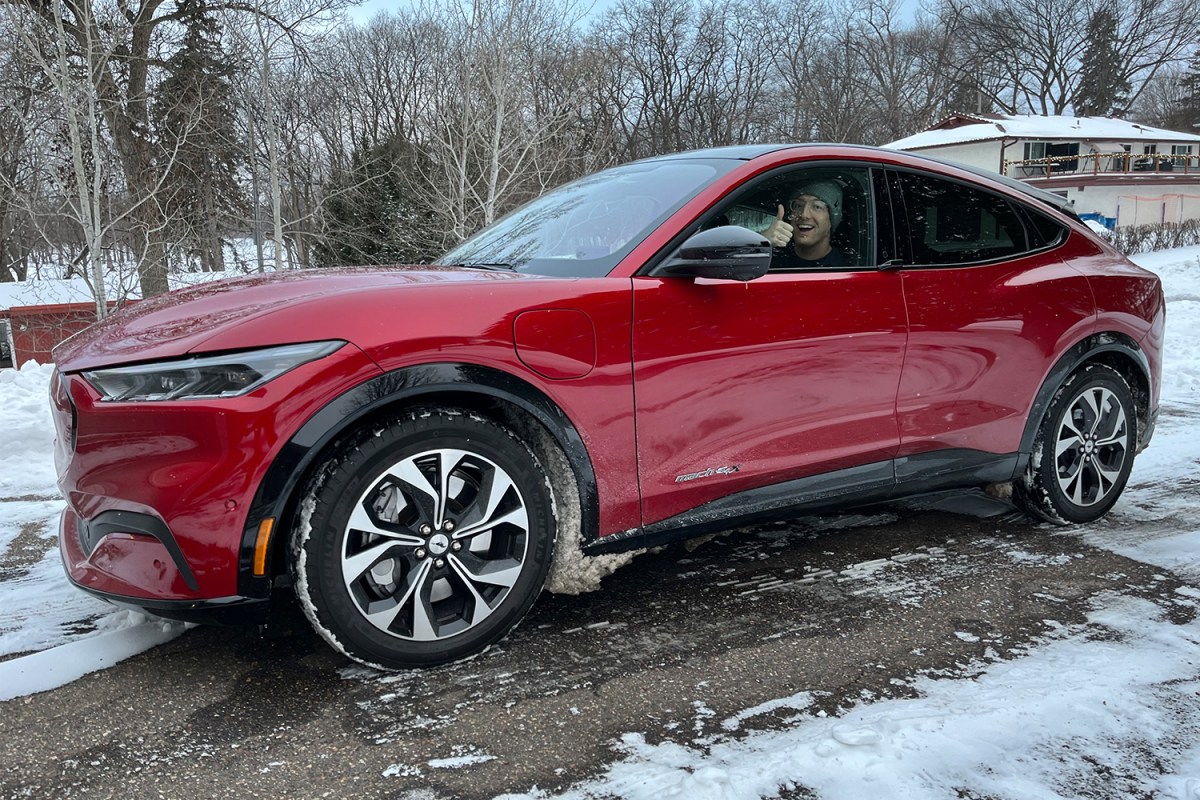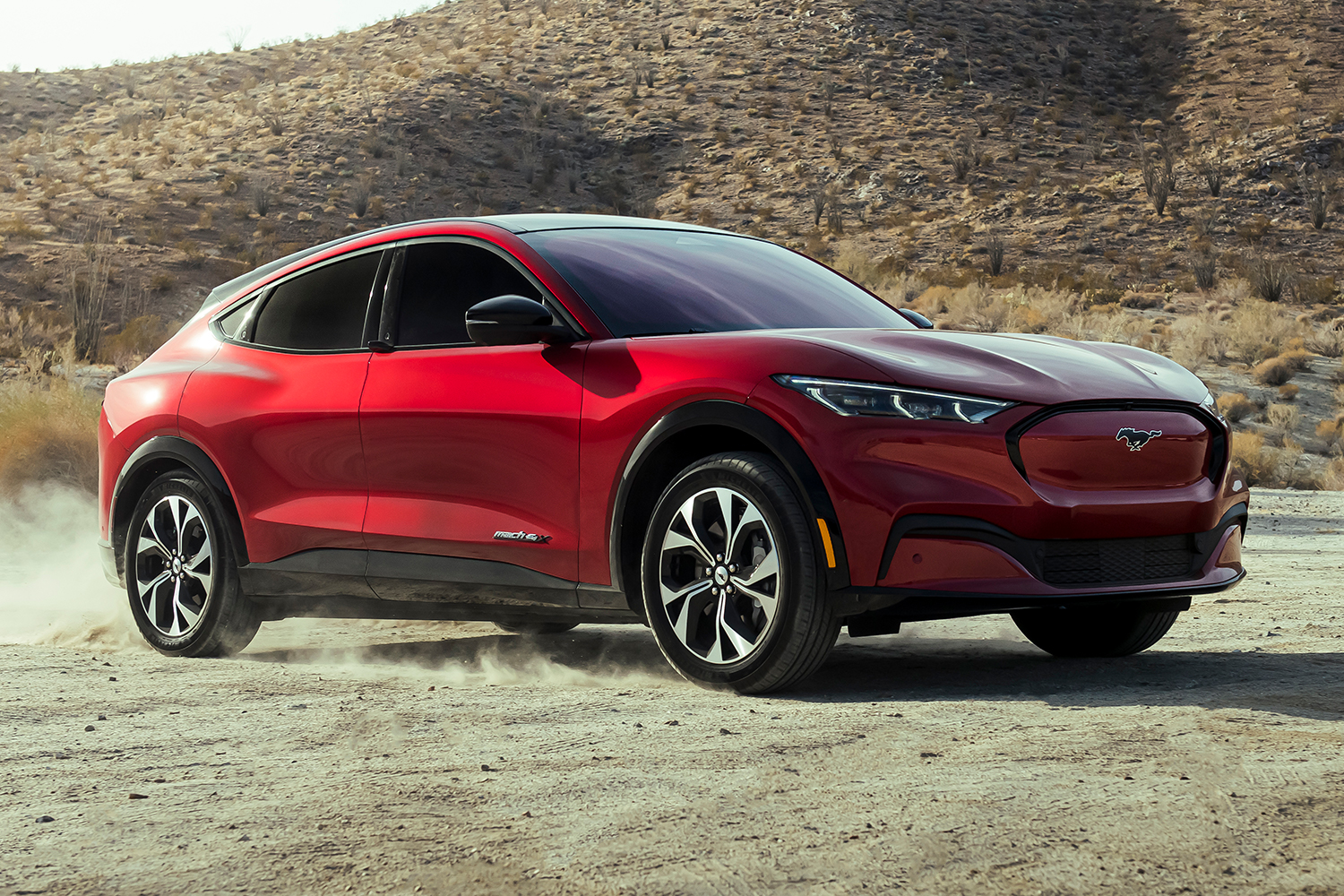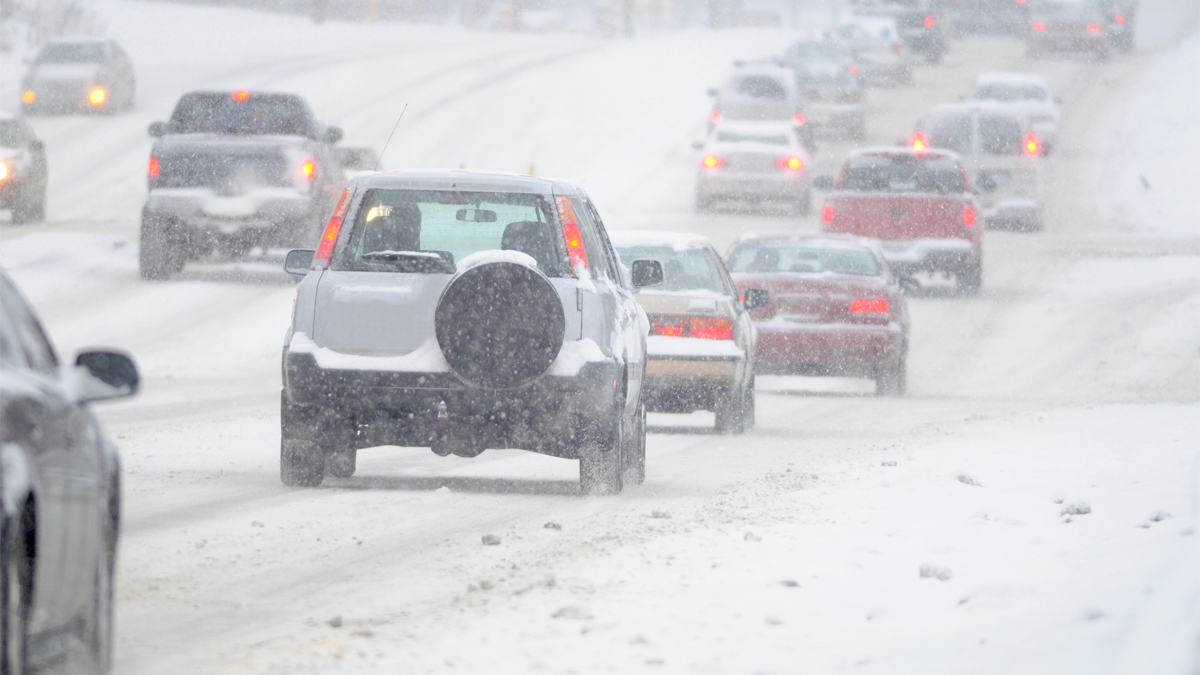After a winter storm left hundreds of motorists stranded on Interstate 95 in Virginia, many for over 24 hours, we were left with plenty of questions. What went wrong on a governmental level that led to this? How could similar traffic shutdowns be avoided in the future? What should we keep in our cars in case of an emergency like this?
The most perplexing question of the bunch was a hypothetical one: what would have happened if all of these cars — stuck on icy roads in the snow in temperatures that dropped down to the teens — were electric? Well, it was posed as a hypothetical question, but most of the people who asked it perceived it as a rhetorical one; the implication was that if I-95 was full of idling electric cars, the outcome would have been a catastrophe of dead batteries, stalled vehicles, and frozen occupants.
Seeking Shackleton’s “Little Voices” on a Two-Week Voyage to Antarctica
On a cruise with Abercrombie & Kent, our travel correspondent came face to face with towering icebergs, turbulent seas and the majesty of the White ContinentIt’s easy to make an argument against electric cars in extreme winter cases like these, partially because the technology is so new and thus easily misunderstood, and partially because, as we have previously discussed, EVs do indeed fare worse in freezing temperatures than in warmer weather (as do internal combustion engine cars). But to see whether there was an argument to be made in defense of our supposed electrified future, I did something a little more difficult: I idled in an electric car for 12 hours to see what would happen.
Before electric vehicles hit the market, they are put through all manner of incredibly rigorous and expensive tests. Donna Dickson, the chief engineer of Ford’s Mustang Mach-E, told me that the crossover was put through torture testing down to -40 degrees Fahrenheit. Yet, the circumstances in Virginia weren’t necessarily that cold, they were simply prolonged. So Ford loaned me a Mach-E for a supremely mundane test of my own devising, one where I would idle the car for half a day in the below-freezing weather that’s currently gripping my home state of Minnesota.
Would the battery die? Would the electric power fail to keep me warm? Or would I disembark from my stationary journey with a hefty amount of charge and rosy cheeks? That’s what I planned to find out.
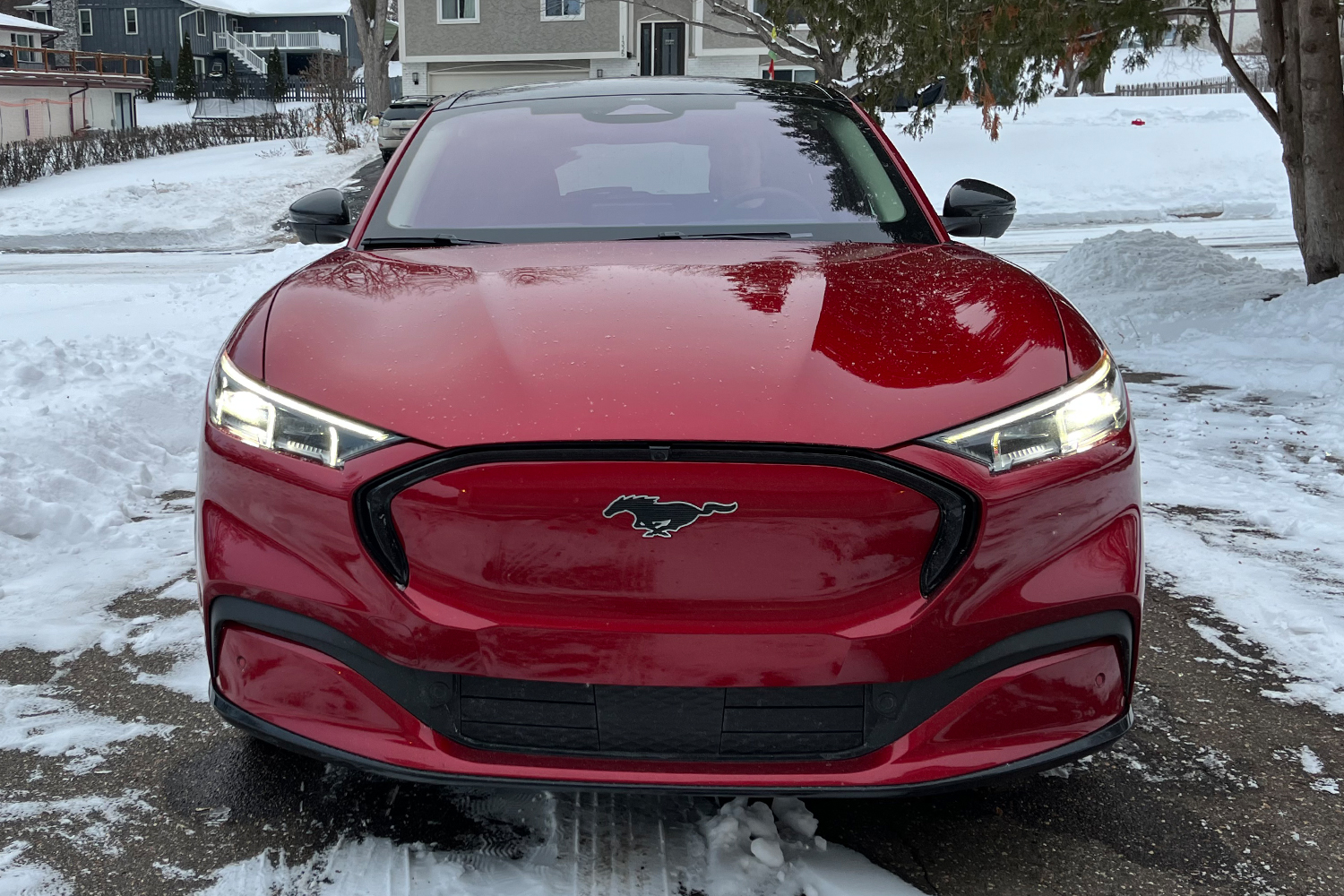
Electric Car Idle Test
For my test, I wanted to keep things simple. There are plenty of controlled studies from automakers and various scientific groups that people could look up about EVs, their battery technology and what happens when the mercury drops if they wanted. But what we’re dealing with in the aftermath of the I-95 situation is a case of generalizations about new technology that many people have a hard time grasping. So I wanted to make this as free of jargon as possible.
The basic idea was this: I would sit in the car like I was stuck in traffic the entire time, keeping the cabin warm enough not just for me but for theoretical passengers as well, and see how much the range dropped in that time. The Mustang Mach-E I tested was a 2021 Premium AWD model with an extended-range battery (88 kWh), which the EPA estimates at 270 miles of range on a full charge. But the delivery person who dropped it off told me it was a pre-production unit without all the software updates, so he said to expect a lower top range.
When I got in the car to start the test at 5:45 a.m., the charge read 100% but only 186 miles of range on the instrument cluster. I was warned the range might start even lower in the extreme cold, and my garage where the car was plugged in is barely insulated and certainly not heated. (Ford’s specific guidance is that storing the car between 32 degrees and 113 degrees “is most beneficial for the high voltage battery.”) The temperature was 13 degrees (-1 windchill), which was ideal as the temperatures in Virginia got about as cold as that.
Instead of simply backing out into my driveway and beginning the idle, I treated the situation as if I were getting onto the highway. I took the car out for a spin first, stopping at the drive-through of a local Starbucks, and then making my way back to my house where I would “sit in traffic” for the next 12 hours. I didn’t wear particularly warm clothing or bring any blankets or sleeping bags, I simply dressed like I thought I’d be getting out of the car soon.
Before receiving the Mach-E, I had a chance to chat with Ford’s Dickson to get some insight into the vehicle, hear her predictions and get some pointers about running the EV in the freezing cold. First, she said to precondition the car while it was still plugged into the wall, which is standard practice for electric cars. Basically, you want to warm up the battery and the car interior while you’re drawing power from the electrical grid instead of the car’s own battery. So I did that. Second, she said it would be much more efficient to stay warm using the heated seats and steering wheel instead of heating the entire cabin through the air vents. I did that also, to an extent.
I did use the heated seats and steering wheel, but I also tried to keep the cabin warm enough that even backseat passengers would be comfortable, so I played around with using only the footwell heating as well as the full-on blast from the footwell and dashboard vents, toggling between 70 and 75 degrees. Beyond the heat, I tried to replicate the in-traffic experience as much as possible, driving around the block a few times over the half day to simulate spurts of moving traffic, using the lights and radio at certain intervals, and even turning the car off for periods of 15-30 minutes a handful of times to conserve energy.
Here’s how the battery range held up in three-hour intervals:
- 6 a.m.: 100% charge, 186 miles of range, outside temperature 13 degrees
- 9 a.m.: 92% charge, 164 miles of range, outside temperature 14 degrees
- 12 p.m.: 87% charge, 157 miles of range, outside temperature 18 degrees
- 3 p.m.: 81% charge, 144 miles of range, outside temperature 22 degrees
- 6 p.m.: 75% charge, 132 miles of range, outside temperature 24 degrees
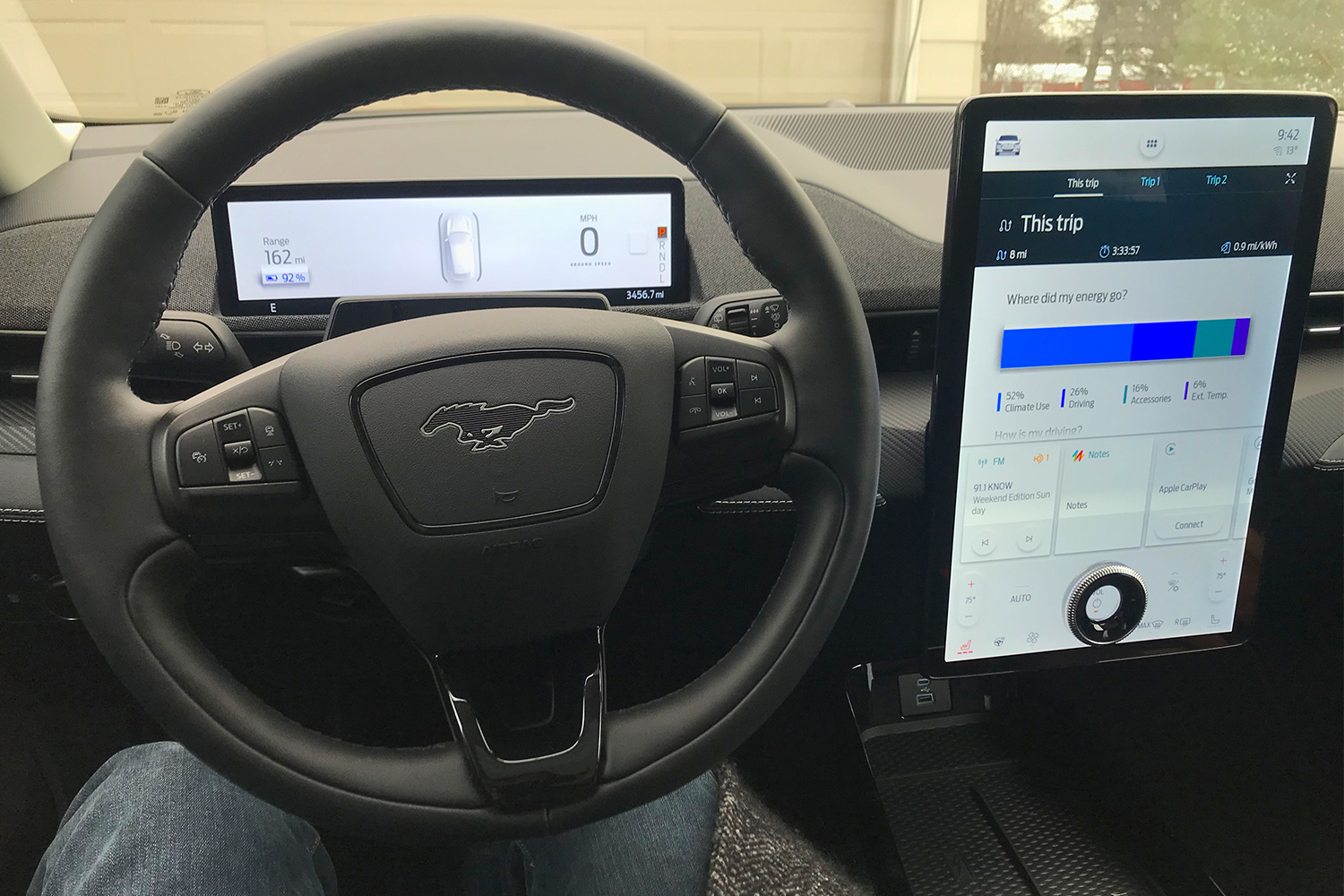
Did the Electric Car Hold Its Own?
If we interpolate the findings of this test into the situation in Virginia, it’s clear this particular vehicle would have likely been fine. I lost 25 percent of the range over 12 hours while keeping the cabin toasty, so it stands to reason that over 24 hours I wouldn’t have lost much more than 50 percent. I also took the Mach-E for a drive after my test just to make sure it would be able to keep going after idling for so long, and it drove off normally, just as if it hadn’t been standing ice cold in the snow for half a day.
Does this single informal experiment prove that all EVs are ready for whatever winter could possibly throw at us? Of course not. In fact, it probably brings up more questions than it answers. (What if your car doesn’t have heated seats? You’d probably need to use more direct heat, and thus drain more of the battery. What about EVs that have longer ranges and cold-weather packages? They might do even better.)
What I think it does confirm is something Dickson mentioned in my interview with her before the trial. When I asked what she would say to people who were worried EVs wouldn’t be able to survive a situation like I-95’s snowpocalypse, she said qualms about how they perform in the cold is “an old perception of batteries or battery technology.” Batteries are better today, range is better and the vehicles as a whole product are better. But more than that, she reiterated the fact that electric cars are “just so new, especially to North America.”
Newness is scary, change is scary and the idea of being in a scary situation in a new vehicle is doubly so. It makes sense that people are worried about swapping out their polluting gas cars for newfangled electric cars. But I must say, after this cramp-inducing test, I’d much rather be stuck in traffic in the heated seats of a Mach-E than the gas car currently sitting in my frozen garage.
This article was featured in the InsideHook newsletter. Sign up now.
